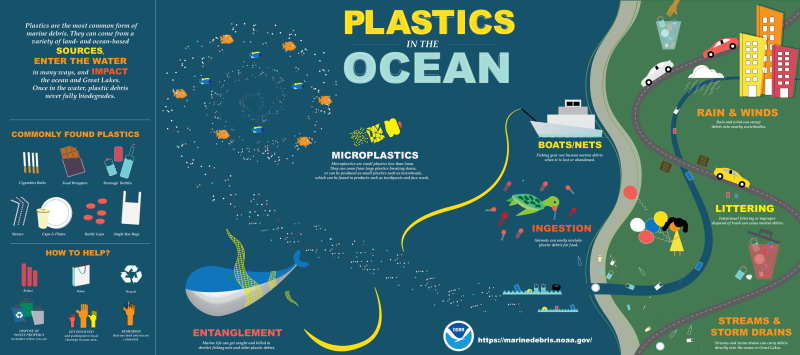Plastics in the Ocean Infographic
Plastics are the most common form of marine debris. They can come from a variety of land- and ocean-based sources, enter the water in many ways, and impact the ocean and Great Lakes. Once in the water, plastic debris never fully biodegrades. Infographic text: Commonly found Plastics include cigarette butts, food wrappers, beverage bottles, cups & plates, bottle caps, and single-use bags. How to help? Reduce, reuse, recycle. Dispose of waste properly no matter where you are. Get involved and participate in local cleanups in your area. Remember that our land and sea are connected. Impacts include:
- Entanglement: Marine life can get caught and killed in derelict fishing nets and other plastic debris.
- Ingestion: Animals can easily mistake plastic debris for food.
Sources include:
- Boats/nets: Fishing gear can become marine debris when it is lost or abandoned.
- Littering: Intentional littering or improper disposal of trash can cause marine debris.
Debris can enter the water via:
- Rain & winds: Rain and wind can sweep debris into nearby waterbodies.
- Streams & storm drains: Streams and storm drains can carry debris directly into the ocean or Great Lakes.
Microplastics are small plastics less that 5mm. They can come from large plastics breaking down, or can be produced as small plastics such as microbeads, which can be found in products such as toothpaste and face wash.
This image appears in our Photo Gallery in the following section(s):
 An official website of the United States government.
An official website of the United States government. 
